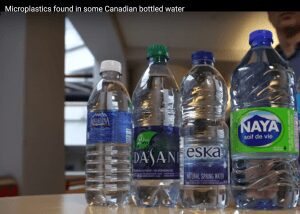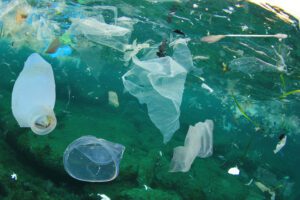The Ocean Plastic Problem
THE OCEAN PLASTIC PROBLEM
FACTS ABOUT OCEAN PLASTIC POLLUTION ... DID YOU KNOW?
Plastic Pollution: Key Facts [SOURCE]
- Plastic waste makes up 80% of all marine pollution and around 8 to 10 million metric tons of plastic end up in the ocean each year.
- Research states that, by 2050, plastic will likely outweigh all fish in the sea.
- In the last ten years, we have produced more plastic products than in the previous century.
- The EPA (Environmental Protection Agency) has stated that basically 100% of all plastics human beings have ever created are still in existence.
- Plastic generally takes between 500-1000 years to degrade. Even then, it becomes microplastics, without fully degrading.
- Currently, there are about 170 trillion pieces of plastic and microplastics in the ocean.
- This plastic either breaks down into microplastic particles, or floats around and ends up forming garbage patches.
- Microplastics are now a part of our weather systems, it’s in our blood, our hearts, our babies are being born with it… Our food and water are now contaminated with microplastics. We now live in a “plastosphere”. [Source]
PLASTIC ENTERS THE OCEAN BY LAND DISPERSAL
80% of the world’s ocean plastics enter the ocean via rivers and coastlines. The other 20% come from marine sources such as fishing nets, ropes, and fleets. ... Previous studies suggested that a very small number of rivers were responsible for the vast majority of ocean plastics: 60% to 90% of plastics came from only ten rivers. SOURCE
EXCESS PLASTIC IS PRODUCED EACH YEAR
We produce 400 million tons of plastic waste each year worldwide (1), half of which is for single-use items. That’s nearly equivalent to the weight of the entire human population. (2) We must choose to reduce our needs and habits surrounding plastic use, especially single-use plastic. We now have many alternatives that biodegrade safely that could help with the plastic ocean problems. SOURCE 1 | SOURCE 2
PLASTIC MANAGEMENT IS DIFFICULT
Plastics are serving a needed function, yet appropriate disposal is often not addressed. Some plastics have toxic components and the recycling techniques have not kept up with new plastic production. Some coastal communities have difficulties in dealing with their excess pl astic. SOURCE
TRILLIONS + PIECES OF PLASTIC ARE IN THE OCEAN
How many tonnes of plastic pollution is in the ocean? More than 170 trillion pieces of plastic, (1) weighing over 8m tonnes, are littering the world's oceans according to a study by the scientific journal PLOS One. The study is the first of its kind to gather data from around the world on floating plastic garbage in the ocean. (Study is from 2014) SOURCE 1 | READ THE 2014 STUDY
PLASTIC RECOVERY IS POSSIBLE
Several EU countries recycle 60-70% of used plastics and recover over 80% through integrated waste and resource management. We are currently recycling 90% of the ocean marine plastics and debris we recover on our expeditions, keeping much of it out of landfills. Legacy Plastic™Legacy Plastic™ and our Ocean Plastic Depots are providing collection and processing of recovered plastic! SOURCE
PLASTIC BREAKS DOWN INTO MICROPLASTICS
Small weathered micro-plastics are now found within digestive systems of sea life, birds and mammals globally. They are also found in our seafood, our commercial beers, wines and bottled waters and were recently found to be falling in rain, yes, plastic rain from deteriorated plastic! We now live in a "plastosphere". Source
PLASTIC IMPACT ON MARINE LIFE IS ENORMOUS
More than 1 million seabirds and 100,000 marine animals die from plastic pollution every year. 100% of baby sea turtles have plastic in their stomachs. Marine plastic pollution has also affected 59% of whales, 36% of seals and 40% of seabirds of those examined. Every day, more and more marine creatures are dying and washing ashore full of plastic and trash. SOURCE
THERE ARE 5 PLASTIC OCEAN GYRES
Plastic and debris is concentrated in 5 areas called gyres as a result of oceanic currents, which continue to grow as they are constantly replenished with new plastic and marine debris. LEARN MORE
THERE'S A GREAT PACIFIC GARBAGE PATCH IN THE OCEAN
The North Pacific Gyre's great pacific garbage patch is a soup of plastic floating and deteriorating in the ocean twice the size of Texas and a rapidly growing monstrosity on our planet. LEARN MORE
OCEAN PLASTIC IS A VALUABLE COMMODITY
A change in perceptions, could help change our strategies around plastic use and "disposal". The marine debris OLF collects is being transformed into a recycled pellet, packaging, products, art, a mixed oil fuel and otherwise being recycled. EPR means we can create a proper circular economy for plastics LEARN MORE
THE PROBLEM IS CLEAR
Model results estimate the global number of floating plastic pieces to be:
- The two oceans of the Northern Hemisphere contain 56% of all particles and 57% of the total weight.
- In the Southern Hemisphere the Indian Ocean appears to have a greater particle count and weight than the South Atlantic and South Pacific oceans combined.
CLICK TO VIEW THE INTERACTIVE MAP IMAGE IN THE BACKGROUND






